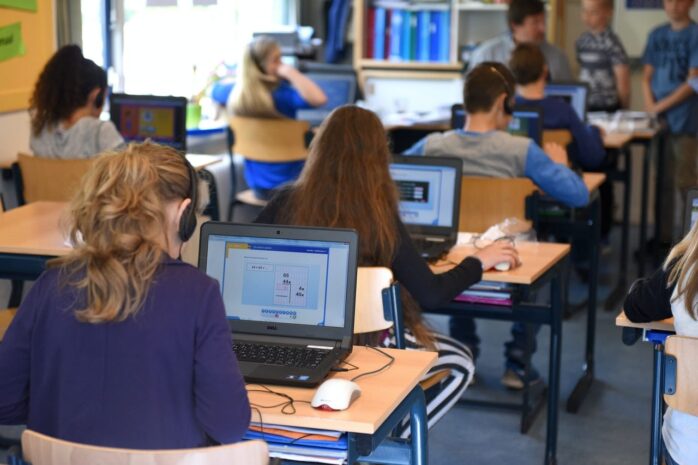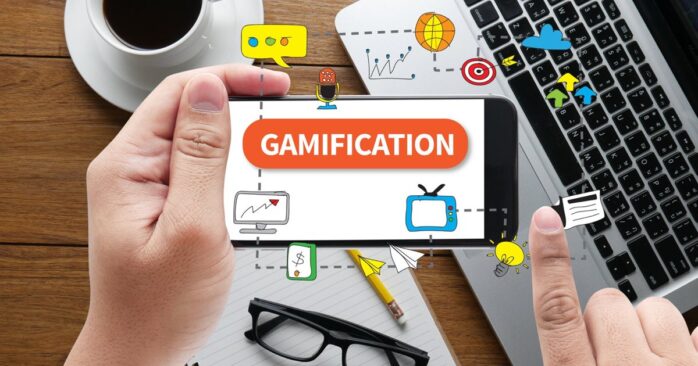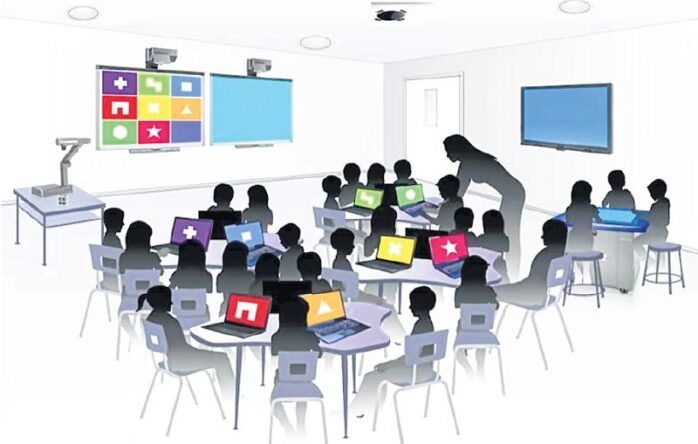The advancement of technology has revolutionized almost every aspect of our lives, including education. Education technology (EdTech) has transformed traditional classrooms into smart classrooms, providing students and teachers with innovative tools and techniques to enhance the learning experience.
In this article, we will discuss how education technology and smart classrooms are changing the way we learn and teach.

Smart classrooms are equipped with state-of-the-art tools and technologies that promote interactive and engaging learning. Some of the common tools found in smart classrooms include interactive whiteboards, projectors, smart tablets, virtual and augmented reality, and cloud-based educational software. These tools enable teachers to create a dynamic and immersive learning environment that captures students’ attention and fosters their curiosity.
One of the most significant benefits of education technology is that it provides personalized learning experiences for students. Smart classrooms enable teachers to tailor their lessons to the needs and abilities of individual students, allowing them to progress at their own pace. This is particularly helpful for students who require additional support or have learning difficulties. Smart classrooms also provide opportunities for students to learn beyond the traditional classroom, allowing them to access educational materials and resources from anywhere in the world.
Another significant benefit of education technology is that it promotes collaboration and communication among students. Smart classrooms provide opportunities for students to work together on projects, share ideas and knowledge, and collaborate on assignments. This not only helps to develop their teamwork skills but also enables them to learn from one another.
Education technology has also made it easier for teachers to assess and monitor their students’ progress. Smart classrooms provide real-time feedback on students’ performance, enabling teachers to identify areas where students may be struggling and adjust their teaching accordingly. This helps to ensure that students are receiving the support and resources they need to succeed.

While education technology has many benefits, it is important to note that it also has its challenges. One of the main challenges is that it can be expensive to implement and maintain. Smart classrooms require a significant investment in technology and infrastructure, which can be a barrier for some schools and educational institutions.
Another challenge of education technology is that it requires teachers to adapt to new teaching techniques and tools. While many teachers are enthusiastic about using education technology in their classrooms, others may be resistant to change or may lack the necessary skills and training to use these tools effectively.
Despite these challenges, the benefits of education technology and smart classrooms far outweigh the challenges. As technology continues to advance, we can expect to see even more innovative tools and techniques that will transform the way we teach and learn.
The education technology (EdTech) industry has been rapidly evolving over the past few years, and it shows no signs of slowing down. The COVID-19 pandemic has only accelerated the adoption of technology in education, and many educators and students have embraced online learning as a way to stay connected and engaged in the learning process.
Here are some of the key trends that are shaping the EdTech industry:
Personalized learning:

Personalized learning is an approach that tailors learning experiences to the needs and interests of individual students. With the help of technology, educators can create customized learning paths for each student based on their skills, learning style, and preferences. For educators in early childhood education and care courses, understanding personalized learning is crucial to meeting the needs of young children. With the help of technology and adapted teaching methods, they can customize learning experiences relevant to each student’s skills and interests. Adaptive learning platforms that use machine learning algorithms to analyse student data and provide targeted feedback are becoming increasingly popular. These platforms can help students stay engaged and motivated by providing them with challenging yet achievable tasks.
Gamification:

Gamification is the process of incorporating game-like elements into learning activities. This trend has been around for a while, but it is gaining more traction as educators look for ways to make learning more fun and engaging. Gamification can help students develop critical thinking and problem-solving skills by presenting them with challenges that require them to apply what they have learned in a creative way. Educational games and simulations are becoming more sophisticated, and many are designed to be played on mobile devices.
Virtual and augmented reality:
Virtual and augmented reality technologies are transforming the way students learn by providing immersive experiences that bring subjects to life. VR and AR can be used to create simulations of real-world scenarios, such as historical events, scientific experiments, or art exhibitions. Students can explore these environments and interact with virtual objects, which can help them develop a deeper understanding of the subject matter. VR and AR technologies are still relatively expensive, but as they become more widely available, they are likely to become more popular in the education sector.
Artificial intelligence:
Artificial intelligence (AI) is a technology that is being used in a variety of industries, including education. AI can be used to automate repetitive tasks, such as grading assignments, providing feedback, or tracking student progress. AI-powered chatbots can also be used to provide students with 24/7 support and answer their questions in real-time. As AI becomes more sophisticated, it may also be used to create personalized learning experiences that are tailored to each student’s needs.
Collaboration tools:
Collaboration tools are becoming increasingly important in the education sector as students and educators work together remotely. Video conferencing platforms, such as Zoom and Microsoft Teams, are being used to facilitate virtual classrooms and meetings. Collaboration tools, such as Google Drive and Dropbox, are being used to share files and collaborate on projects. These tools can help students develop teamwork and communication skills, which are essential for success in the modern workplace.
Mobile learning:
Mobile learning is a trend that is gaining popularity as students and educators look for ways to learn on the go. Mobile devices, such as smartphones and tablets, are becoming increasingly powerful and versatile, and many educational apps are being developed to take advantage of these devices. Mobile learning can be particularly useful for students who have busy schedules or who are unable to attend traditional classes. Mobile learning apps can provide students with access to educational materials, quizzes, and interactive activities that they can complete at their own pace.
In conclusion, education technology and smart classrooms have revolutionized the way we learn and teach. By providing personalized learning experiences, promoting collaboration and communication, and enabling teachers to assess and monitor students’ progress, education technology is changing the face of education. While there are challenges to implementing education technology, the benefits are significant and far-reaching. As we continue to embrace these tools and techniques, we can expect to see even greater advancements in education and a brighter future for our students.



















